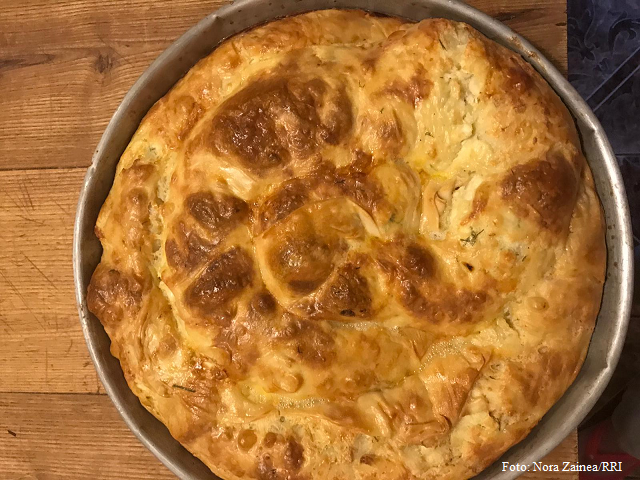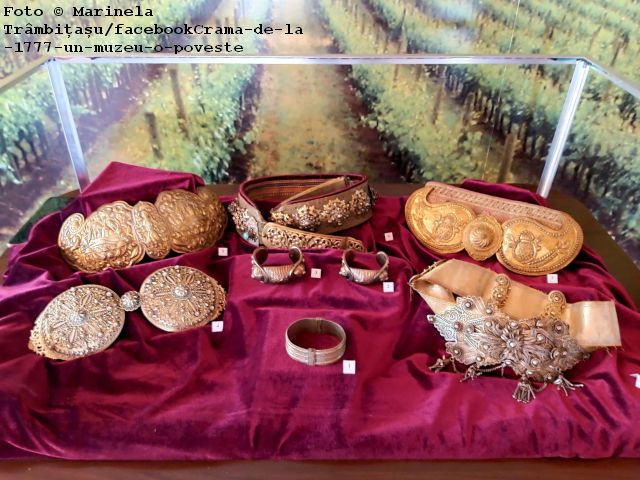Romania’s gastronomical ambassadors
Several Romanian products have become part of the EU register of protected designations of origin and protected geographical indications (PGI)

Corina Cristea, 18.08.2023, 14:00
This is a pastry product filled with a mixture of salt cheese, eggs and yoghourt. Its sheets are made of dough rolled and placed in a spiral form in round baking pans. This is a delicious soft-crispy product with soft filling due to the mixture of eggs and yoghourt poured on top of it unlike other similar products which are crispy with a slightly frail crust. Another difference from other similar products of this kind is the use of non-frozen dough, which is actually freshly-made for every baking pan.
This product is known as the Dobrudjan pie, a very popular product in south-eastern Romania, which has recently gained European recognition and protection through the system of the EU register of protected designations of origin and protected geographical indications (PGI). The moves in this respect kicked off in 2017, a year when the Traditional Moesis Association had been set up with a view to promoting the traditional Romanian product and producers but also the identity construction of the Romanian products both on the interior and external markets.
The Dobrudjan Pie is completing the list, not very long for the time being, of Romanian food products recognized until now through the European quality systems. The list starts with the Topoloveni plum jam and also includes the Sibiu Salami, the Smoked Bighead Carp, the Smoked Danube Mackerel, the Plescoi sausages, the
Telemea of Ibanesti, a sort of brined white cheese, all with protected geographical indications (PGI)
In south-eastern Romania the Dobrudjan pie, is a product, which has always been present on the Romanians festive tables for several hundreds of years now. Like the fortune cookies served on the New Years Eve, the pie boast a century-old tradition and is also served right before the beginning of the Lent, as Paula Vals, head of the Traditional Moesis Association says.
After a recipe passed down from generation to generation, the pie has been prepared in Dobrudja and only by brides, the second day after the wedding in order to prove to the guests they know how to prepare and bake the finest pie sheet.
Data show that the steps and procedure to follow in order to achieve the PGI recognition at European level are comprised in the EU Regulations 1151/2012 and a law issued in 2015, setting up some procedures and technical issues, which Ștefan Pădure, chair of the Association for Promoting the Romanian Products has explained to Radio Romania.
Stefan Padure:”The quality schemes and regulations are the way through which the member states can fund their products through a common agricultural policy where you cannot intervene and support sale and promotion on a single European market. Here is what makes the difference and we can thus explain many things. First off, in order to protect your equivalences on European regulations we must take into accounts five regulations for the making of protected products: 1151 – with protected Geographical indication, protected designations of origin, traditional Speciality Guaranteed (TSG) and mountain products upon which we have regulations for organic and bio products – identical names according to each country. These regulations are applied to all member states. Then there is a b point where we have schemes of national quality. Unfortunately, for Romania there are only two – traditional products and traditional recipes. When they are communicated to the European Commission and are complying with the provision of the 1305 regulations they are producing the same effects as European regulations. And for this reason all the member states are trying to find out as many quality schemes and certify as many national products as possible, because in the member states in order to support farmers and agricultural producers on the market, and help them produce quality products and maintain quality, one needs these umbrella-schemes.”
At the EU level there are over 1,600 products with protected geographical indication or protected designation of origin. Italy has 317, France 260, Spain 204, followed by Germany, Portugal and Greece with over 100 products each. China a non-EU member, presently boasts 99 products of this kind. Here is again Stefan Padure
Stefan Padure: “These schemes of Quality with geographical indication are more restrictive at protected designation of origin because you have to take the raw materials and carry out your activities in a delimited area. When it comes to geographical indication you can get the raw material from outside the delimited area. We are presently in an era of globalization and Europenization where the national character is fading away. However, Europe has understood that this local regional character can be kept and this is exactly what is happening by means of these European and national quality schemes. Things are very strict and protected for now”
Besides food products Romania has registered in the EU Registry of geographical indications also alcoholic drinks, like fruit spirits, known in Romania as Wine Brandy. The Agriculture Ministry is making moves for the registration of the mugwort wine, known in Romania as Vin Pelin.
(bill)






























